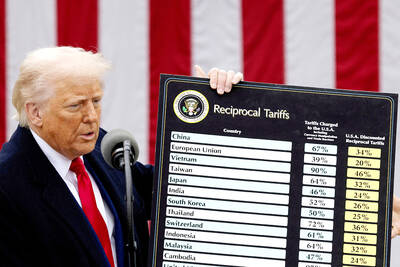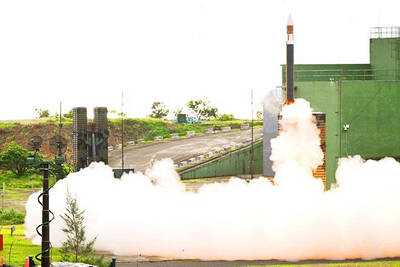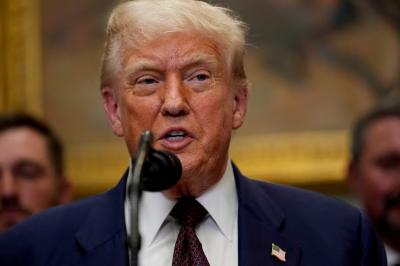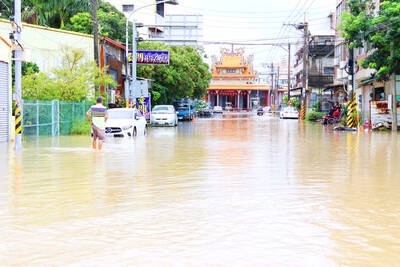Amanda Sutton looks over a wheat field in northern Colorado and sees a potential “carbon offset project” that could help curb greenhouse gas emissions linked to global warming.
“This is a patch of highly cultivated land that could provide potential carbon offsets,” she said, standing by a field that is owned by the city of Fort Collins and the surrounding county.
“What we would do is take this wheat field and restore it to a native grassland which would sequester carbon from the atmosphere which we could potentially sell,” said Sutton, an environmental specialist with the city.
Potential projects in the emerging carbon market are sprouting like wheat after a good rain in anticipation of “cap and trade” provisions in a climate bill that has narrowly passed the US House of Representatives but could see significant revision in the Senate.
They could be part of a strategy to meet the bill’s current target to cut US greenhouse gas emissions by 17 percent of 2005 levels by 2020. A cap-and-trade inspired market in Europe has been in place since 2005 and is the biggest by far.
Carbon trading and projects are already underway in various versions in the US and contribute to a global voluntary market that last year saw turnover more than double to US$705 million, Ecosystem Marketplace and New Carbon Finance said.
CARBON SINK
Three regional US groups are trading or are in the process of creating regulated carbon trading markets. To trade on such markets, a project must reduce greenhouse gas emissions or, in the case of converting a cultivated field to its natural state or reforesting a patch of land, act as a “carbon sink” to absorb emissions spewed elsewhere.
Once a project is certified and its “carbon offset” is measured in tonnes, it can sell them as “credits” to polluters unable to meet their emission targets, or even to groups that want to say they have cut their “carbon footprints.”
Some experts say carbon sinks are increasingly important because the world is failing to curb greenhouse gases from power plants, planes and cars fast enough, and so needs to buy more time to avoid dangerous climate change.
But some environmentalists say trading in pollution is ultimately a ruse.
“By using offsets, industry will be able to sidestep emissions reductions. It is a get-out-of-jail-free card,” says Damon Moglen, the Global Warming Campaign director for Greenpeace.
Trees store carbon while they grow and release it back into the atmosphere when they rot. So in the vocabulary of carbon markets a healthy forest is a “carbon sink.” Tree growth in the US currently sucks up about 12 percent of the country’s greenhouse gas emissions — a huge total.
The US climate bill may provide an economic windfall to land owners including non-profit organizations, cities, farmers and forest owners who can turn farmland or cleared land back into forests. It may also reward “sustainable forestry” practices, though their carbon benefit will be tough to gauge.
“We see emerging carbon markets as a every exciting revenue source for small family forest owners,” said Bob Simpson, vice president for the Center for Family Forests.
But the cost to a small family landowner of having their offsets measured and certified remains unclear.
Groups like Woodlands Carbon in Oregon are forming around the country to reduce the costs of market entry by joining several forest owners into one portfolio.
Many investments being made are essentially “bets” on the bill that ultimately emerges from Congress, said Mary Grady, a director at the American Carbon Registry.
“The current legislation is very favorable ... It is a wonderful first step and it is sending the first signals to the market. But the general feeling is that the legislation is not going to pass in its current form,” she said.
Once the bill passes, 900 million tonnes of carbon could accumulate in the market by 2012 or 2013, when the regulations are supposed to take effect. The American Carbon Registry currently has 22 projects worth about 27 million tonnes.
Grady also said carbon traders worried that the legislation currently says that the “administrator,” which depending on the project could be the Environmental Protection Agency or the US Department of Agriculture, will approve programs — but it has not named the programs.
“If it was clear people would have lots of confidence in making their investments but people don’t know where to place their bets,” she said.
‘GREEN JOBS’
Getting a project verified has spawned a whole new industry that could create some of the “green jobs” US President Barack Obama has said will go with the new green economy.
These include independent, third party project verifiers who apply financial accounting techniques while also using gadgets like gas analyzers to measure carbon tonnage.
Back at the field in Colorado, Sutton says if this project were to become a reality — a big if — it would have to meet the stringent standards of the voluntary market and show it is removing more carbon from the atmosphere than would have happened naturally.
For now, the wheat will remain.

WAITING GAME: The US has so far only offered a ‘best rate tariff,’ which officials assume is about 15 percent, the same as Japan, a person familiar with the matter said Taiwan and the US have completed “technical consultations” regarding tariffs and a finalized rate is expected to be released soon, Executive Yuan spokeswoman Michelle Lee (李慧芝) told a news conference yesterday, as a 90-day pause on US President Donald Trump’s “reciprocal” tariffs is set to expire today. The two countries have reached a “certain degree of consensus” on issues such as tariffs, nontariff trade barriers, trade facilitation, supply chain resilience and economic security, Lee said. They also discussed opportunities for cooperation, investment and procurement, she said. A joint statement is still being negotiated and would be released once the US government has made

NEW GEAR: On top of the new Tien Kung IV air defense missiles, the military is expected to place orders for a new combat vehicle next year for delivery in 2028 Mass production of Tien Kung IV (Sky Bow IV) missiles is expected to start next year, with plans to order 122 pods, the Ministry of National Defense’s (MND) latest list of regulated military material showed. The document said that the armed forces would obtain 46 pods of the air defense missiles next year and 76 pods the year after that. The Tien Kung IV is designed to intercept cruise missiles and ballistic missiles to an altitude of 70km, compared with the 60km maximum altitude achieved by the Missile Segment Enhancement variant of PAC-3 systems. A defense source said yesterday that the number of

Taiwanese exports to the US are to be subject to a 20 percent tariff starting on Thursday next week, according to an executive order signed by US President Donald Trump yesterday. The 20 percent levy was the same as the tariffs imposed on Vietnam, Sri Lanka and Bangladesh by Trump. It was higher than the tariffs imposed on Japan, South Korea and the EU (15 percent), as well as those on the Philippines (19 percent). A Taiwan official with knowledge of the matter said it is a "phased" tariff rate, and negotiations would continue. "Once negotiations conclude, Taiwan will obtain a better

FLOOD RECOVERY: “Post-Typhoon Danas reconstruction special act” is expected to be approved on Thursday, the premier said, adding the flood control in affected areas would be prioritized About 200cm of rainfall fell in parts of southern Taiwan from Monday last week to 9am yesterday, the Central Weather Administration (CWA) said. Kaohsiung’s Taoyuan District (桃源) saw total rainfall of 2,205mm, while Pingtung County’s Sandimen Township (三地門) had 2,060.5mm and Tainan’s Nanhua District (南化) 1,833mm, according to CWA data. Meanwhile, Alishan (阿里山) in Chiayi County saw 1,688mm of accumulated rain and Yunlin County’s Caoling (草嶺) had 1,025mm. The Pingtung County Government said that 831 local residents have been pre-emptively evacuated from mountainous areas. A total of 576 are staying with relatives in low-lying areas, while the other 255 are in shelters. CWA forecaster